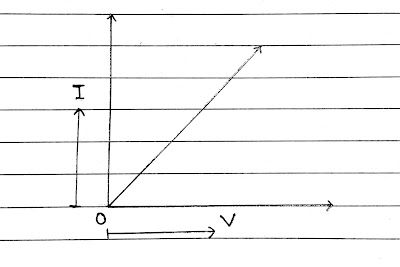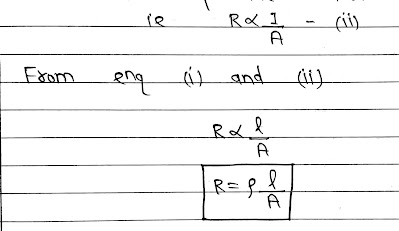Chapter-3|Current Electricity| NCERT 12th Physics:
Ohm’s Law:
It is stated that the current I flowing through a conductor is always directly proportional to the potential difference V across the ends of the conductor, provided that the physical conditions (temperature, mechanical strain, etc) are kept constant.
Note: The value of a resistance of a conductor depend upon the length, shape and the nature of the material of the conductor. It does not depend the value of V and I.
A conductor which obey Ohm’s law is called ohmic conductor. For ohmic conductor, the graph between V and I is a straight line.
Resistance of a Conductor:
The resistance of a conductor is the property by virtue of which it opposes the flow of charges through it.
It is defined as the ratio of the potential difference applied across the end of the conductors to the current flowing through it.
Definition of 1 Ohm:
The resistance of a conductor is said to be 1 ohm if 1 ampere of current flows, when a potential difference of 1 volt is applied across the end of the conductor.
Its dimensional formula is [ML²T⁻³A⁻²].
The resistance of the conductor depends upon the following factors.
(I) It is directly proportional to the length of the conductor R ∝ l. (i)
(II) It is inversely proportional to the the area of the cross section of the conductor.
Where ρ is constant of proportionality known as resistivity or specific resistance of the conductor.




